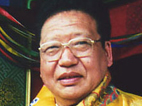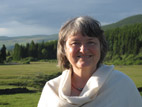History
The Origins of the Methods of Tara RokpaThe origins go back to Akong Rinpoche's experiences of leaving his homeland at the age of 20 in 1959. His journey out of Tibet was very difficult and involved much hardship from which many did not survive. Akong Rinpoche was aware that it was only by applying the wisdom of his Buddhist training and realisation that he was able to endure such arduous conditions. His training was also invaluable in helping him face the challenges he later encountered as a refugee in India and in Britain. 
Akong Rinpoche Rinpoche co-founded Samye Ling in 1967 with Trungpa Rinpoche. People in need of meditation instruction, Buddhist teachings and healing gravitated towards Akong Rinpoche seeking advice about meditation and spiritual development. Over time, through observation and direct involvement, he realised that what people were often wanting was help with difficulties they encountered in their daily lives. He developed special methods to help his Western students integrate their physical, emotion and spiritual lives. These methods were systematised in his book Taming The Tiger first published in 1987.
He also wanted to find ways of helping with the inevitable stresses and strains of modern living. This was when the notion of therapy began to emerge in his work. Having appreciated the value of his own training, he began to develop exercises designed to help others overcome their difficulties and reach a level of maturity of mind that would enable them to accept and face their situations in life. The first Tara Rokpa Therapy groups using Rinpoche’s methods were started in 1984-5. During this time Edie Irwin became involved. Her previous training had been equally focused on Buddhist and Western therapy. Throughout the 1980s alongside Akong Rinpoche, she began presenting these methods in the UK and Ireland, Europe, USA and Canada, Southern Africa and Australia. People from all backgrounds and cultures found something of true value in the work. From these experiences Tara Rokpa Therapy began to take shape. 
Edie Irwin The Integration of Eastern and Western ApproachesAs the therapy evolved professionals in the field of medicine and psychotherapy who had engaged with the work began also to exchange with Akong Rinpoche to find ways to integrate their experiences within their own disciplines. A creative process then began, bringing together eastern and western understandings of the mind. Four other western practitioners: Carol Sagar, Art Therapist within the NHS, Brion Sweeney, Dublin based Consultant Psychiatrist and psychotherapist, Dorothy Gunne, psychologist, psychotherapist and family therapist and Trish Swift, clinical social worker and psychotherapist. They all worked together with Edie Irwin and Akong Rinpoche over a period of many years to achieve this integration. Tara Rokpa Therapy was presented by Edie Irwin at the first Western Buddhist Teachers Conference convened by the Dalai Lama in Dharamsala, India in 1992. There are currently a number of psychiatric, psychological and medical settings which have incorporated Tara Rokpa Therapy methods. In addition there are many professionals in various contexts who have engaged with the therapy for themselves and subsequently integrated it into their working practices. Over time the fruits of this work evolved into a step by step programme. While the initial phases of this programme are more typically recognisable within the application of Western psychotherapy, the later phases are founded primarily on Tibetan Buddhist meditation practices of Mind Training. Nevertheless, each phase is comprised of exercises which have evolved from both systems of understanding. The stages of the therapy are clearly defined and participants can choose to withdraw from the process having completed any number of phases. One of the distinguishing features of this therapy historically has been the intention that each person is training to become their own therapist. The Development of the first Tara Rokpa Professional Psychotherapy Training - 1993.Akong Rinpoche initially trained five therapist in his Tara Rokpa Therapy method: Edie Irwin, Carol Sagar, Dorothy Gunne, Trish Swift, and Brion Sweeney. These were all Western trained psychotherapists in their own right and they began offering the method to groups by the early 1990s under Akong Rinpoche’s supervision. This core group then offered the first training of new Tara Rokpa Therapists in 1992. This training emphasised integrating Western and Eastern approaches to the mind. This four year masters level course resulted in five new therapists being added to the team in 1996. The second training was commenced in 1996, with a further group of therapists qualifying in 2000. In the year 2000 the Tara Rokpa Therapy training was recognised by the United Kingdom Council for Psychotherapy (UKCP) as a UKCP accredited training method for psychotherapists. At around the same time the Tara Rokpa Therapy training was also recognised by the Irish Council for Psychotherapy ICP. A further four year Training was undertaking between 2010 and 2015 with further therapists trained. |

